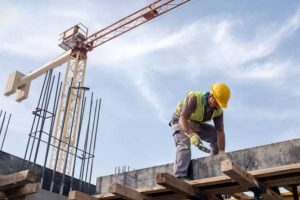New York () — Silicon Valley Bank collapsed due to mismanagement and a sudden panic among depositors, a senior Federal Reserve official is scheduled to explain to lawmakers in a hearing on Tuesday.
In a prepared testimony and published this Monday, Michael Barr, vice president of supervision at the Federal Reserve, details how the leadership of the SVB failed to effectively manage interest rate and liquidity risks.
“SVB’s failure is a textbook case of mismanagement,” Barr says in testimony before the Senate Banking Committee.
The Federal Reserve official points out that SVB’s belated effort to fix its balance sheet only made matters worse.
“The bank waited too long to resolve its problems, and ironically, the steps it ultimately took to bolster its balance sheet triggered the flood of uninsured depositors that led to the bank’s collapse,” Barr said, adding that risk management and controls internals were “inadequate”.
Depositors withdrew $42 billion from the SVB alone on March 9 in a run on the banks, a panic that appeared to be fueled in part by venture capitalists urging tech companies to withdraw their funds.
“There was a lot of talk on social media about a run, and uninsured depositors moved quickly to flee,” Barr said.
The Federal Reserve official shared comments from other top regulators to reassure the public of the safety of banks.
“Our banking system is strong and resilient, with strong capital and liquidity,” Barr said. “Our commitment is to ensure the safety of all deposits. We will continue to closely monitor the conditions of the banking system and we are prepared to use all our tools for institutions of any size, as necessary, to keep the system safe and robust.”
Faced with questions about how regulators, including the Federal Reserve itself, ignored the SVB’s red flags, the Federal Reserve launched a review of the bank’s supervision. Barr, who is leading that review, promised to take an “unflinching look” at the supervision and regulation of the SVB. He said the review will be thorough and transparent, and that officials also welcome external and expert reviews.
In his testimony, Barr reveals that in late 2021, the bank’s supervisors found “deficiencies” in the bank’s liquidity risk management. That led to six supervisory findings related to SVB’s liquidity stress tests, contingency funding and liquidity risk management.
Subsequently, in May 2022, supervisors issued three findings related to “ineffective” board oversight, risk management deficiencies and gaps in the internal audit function, according to Barr. The bank’s supervisors took other steps last year that show regulators were aware of the problems at SVB.
Barr’s testimony indicates that the Fed’s review will examine how the 2018 removal of the Dodd-Frank legislation may have contributed to SVB’s collapse. That setback, under then-President Donald Trump, allowed SVB to avoid stricter stress tests and rules on liquidity, funding, leverage and capital.
Barr said the Fed will consider whether applying those stricter rules to SVB would have helped the bank manage the risks that led to its collapse.
Looking ahead, Barr said recent events have highlighted how regulators need to improve the rules that apply to banks and look at how banking has been changed by social media, customer behavior, rapid growth and other developments.


![[Img #74664]](https://thelatestnews.world/wp-content/uploads/2024/12/James-Watson-The-controversial-genius-behind-the-double-helix-150x150.jpg)







